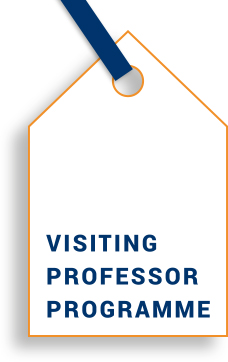prof. Vogel Horst – lectures invitation
It is a pleasure to announce that from the 25th of February till 2nd of March 2019, Prof. Horst Vogel from the Ecole Polytechnique Fédérale de Lausanne (EPFL) and the Institut des Sciences et Ingénierie Chimiques (ISIC)”, will be our guest.
Professor will give two lectures:
Monday, 25 February, in CNBCh UW, Hall B | 12.00
Imaging and manipulating cellular biochemcal networks: from single-cells to single-molecules
Abstract:
Cellular signaling reactions are classically investigated by measuring optical or electrical properties in cell ensembles or individual cells. Miniaturized bioassays are of importance for example in basic research, clinical diagnostics and drug screening applications. Microfluidics and microarray technologies are currently used in this context but are limited to the analysis of nano- to picoliter volumes.
Here we show that cellular signaling cascades can be monitored in single, submicrometer-/attoliter-sized native vesicles derived from living cells. The vesicles comprise parts of a cell’s plasma membrane and cytosol and represent the smallest autonomous containers performing cellular signaling reactions, thus functioning like minimized cells. We report on cellular signaling reactions mediated by ligand-gated ion channels and G-protein coupled receptors (GPCR) in native vesicles using combined single-molecule optical and electrophysiological techniques on a microfluidic chip. As a prototypical example, we measured in individual vesicles the different steps of GPCR signaling like ligand binding to receptors, subsequent G-protein activation and finally receptor deactivation via arrestin translocation.
Since many vesicles can be derived repetitively from a single cell over time and investigated as individuals, they are ideally suited for multiplexing single-cell analysis to study the heterogeneity between as well as within individual cells at different states of cell development and therapeutic treatment. This might be of interest for analyzing the diversity of rare primary cells, for example tumor or stem cells, with direct impact for personalized medical treatment.
Thursday, 28 February, Faculty of Chemistry, Old Library | 15.30
Structure and dynamics of ligand-gated ion channels
Abstract:
Neurotransmitter-gated ion channels of the Cys-loop receptor family mediate fast neurotransmission throughout the nervous system. The molecular processes of neurotransmitter binding, subsequent opening of the ion channel and ion permeation remain poorly understood. Here we review the progress in the field and present our own recent results of high-resolution X-ray crystallography, single particle imaging, and molecular modeling studies of a mammalian Cys-loop receptor, the mouse serotonin 5-HT3 receptor. We revealed at atomic detail how neurotransmitter binding on the extracellular domain of the 5-HT3 receptor induces sequential conformational transitions in the receptor opening a transmembrane ion channel: Agonist binding first induced distinct conformational fluctuations of particular side chains in the highly conserved ligand binding cage, followed by tilting-twisting movements of the extracellular domain which coupled to the transmembrane TM2 helices to open the hydrophobic gate and forming a continuous transmembrane water pathway. The structural transitions in the receptor’s transmembrane part finally coupled to the intracellular region opening passages for ion release. The details of structural transitions of the 5-HT3 receptor deliver important insights for understanding the activation mechanism of mammalian Cys-loop receptors.
All are invited.
More information about professor Horst Vogel: http://vpp.cnbch.uw.edu.pl/visitor/prof-vogel-horst/


